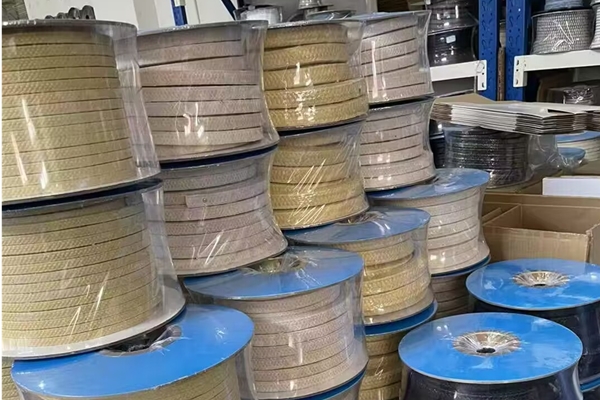PTFE Gasket, also known as Polytetrafluoroethylene Gasket, PTFE Gasket, or Teflon Gasket, is made from PTFE rods, tubes, and sheets through mechanical turning or cutting into flat gaskets, V-shaped gaskets, piston rings, ball valve washers, etc. In fluid sealing (such as pumps, compressors, mixers, centrifuges, etc.), PTFE gaskets are used in components subjected to harsh operational conditions. They possess excellent properties such as corrosion resistance, aging resistance, and non-conductivity. Polytetrafluoroethylene has a pH range from 0 to 14 (excluding molten alkali metals and fluorine at high temperatures and pressures). It maintains good mechanical strength between -100°C and 100°C.
1. Installation Steps for PTFE Gaskets
Inspection and Cleaning
Surface Cleaning: Remove any debris or particles from the gasket sealing surfaces, fasteners (bolts, nuts), and the gasket itself.
Defect Check: Look for burrs, cracks, or other issues in the fasteners, nuts, and gasket. Check the flange surface for warping, radial scratches, or tool marks.
Replacement: Replace any defective parts promptly, and if necessary, consult the seal manufacturer.
Flange Alignment
Ensure the flange faces are flat and the bolt holes align properly. If alignment is difficult, report it or adjust the flange position as needed.
Gasket Installation
Material Confirmation: Verify the gasket’s size and material match the specifications.
Gasket Inspection: Ensure the gasket surface is free from defects.
Placement: Carefully place the gasket between the two flanges, ensuring it’s centered.
Avoid Damage: Ensure the gasket isn’t pierced or torn during installation.
Adhesives: Do not use adhesives or anti-stick agents unless specified in the instructions.
Lubrication
Apply an approved lubricant to the bolt threads, nuts, and contact surfaces, but avoid contaminating the flange faces or the gasket surface.
Bolt Tightening
Use a calibrated torque wrench to tighten the nuts in a cross pattern, gradually and evenly.
Consult the technical department for precise torque requirements.
Re-tightening
Check and re-tighten bolts under ambient temperature and pressure conditions, especially after thermal cycles, following the technical department’s recommendations.
2. Leakage Types and Prevention for PTFE Gaskets
Permeation Leakage
Cause: Flexible gasket materials like fibers might be penetrated by the medium under pressure.
Prevention: Choose higher-density gaskets to prevent medium penetration through capillary structures.
Interface Leakage
Causes:
Insufficient gasket clamping force.
Rough or uneven flange contact surfaces.
Flange deformation.
Prevention:
Ensure the flatness and surface quality of flange contact areas.
Select appropriate flexible gaskets (like ePTFE) and ensure uniform tightening.
Destructive Leakage
Causes:
Harsh conditions (vibration, impact, large thermal deformation).
Over-tightening or improper installation.
Material fatigue, aging, or deformation due to repeated use.
Prevention:
Follow installation guidelines to avoid over-tightening.
Regularly inspect and replace aged gaskets.
Diffusion Leakage
Cause: Medium molecules diffuse through gasket gaps or capillaries due to concentration differences.
Prevention: Choose high-sealing gaskets to seal nitrogen, hydrogen, or other diffusing substances. Be extra cautious with toxic or radioactive media, opting for materials with excellent sealing properties.
3. Common Issues and Solutions
Leakage Due to Improper Installation
Check if the installation follows the correct sequence and method, and if the flanges are properly aligned.
Ensure even bolt tightening using a torque wrench as per specifications.
Material Mismatch
Select gasket material suited to the operational environment, e.g., ePTFE for high temperatures or strong acids/bases.
Flange Deformation or Defects
Replace or repair deformed or defective flanges to ensure a smooth contact surface.
In summary, correctly installing and using PTFE gaskets can significantly reduce leakage and extend equipment life. Understanding the causes of leaks and their prevention enhances the reliability of sealing systems, which is crucial in industrial applications.




